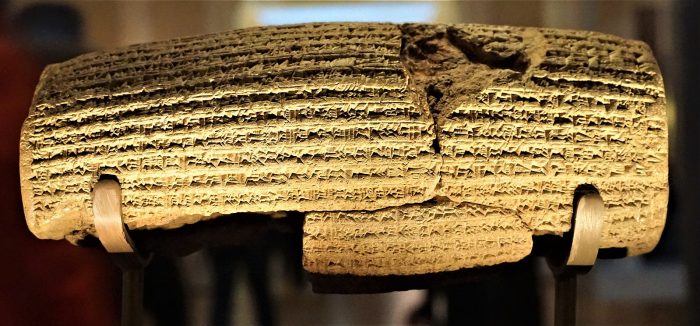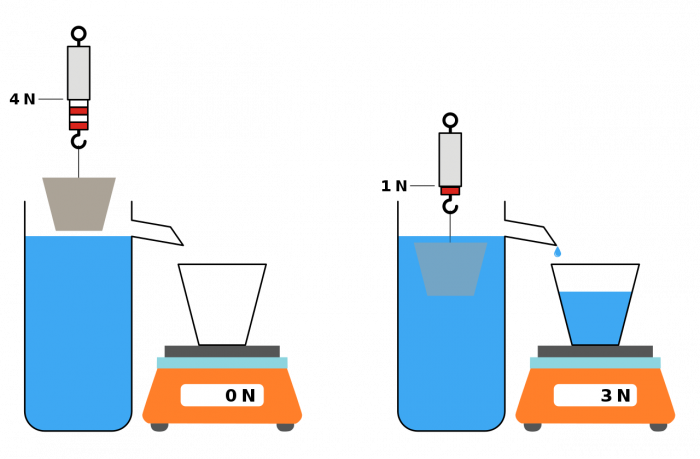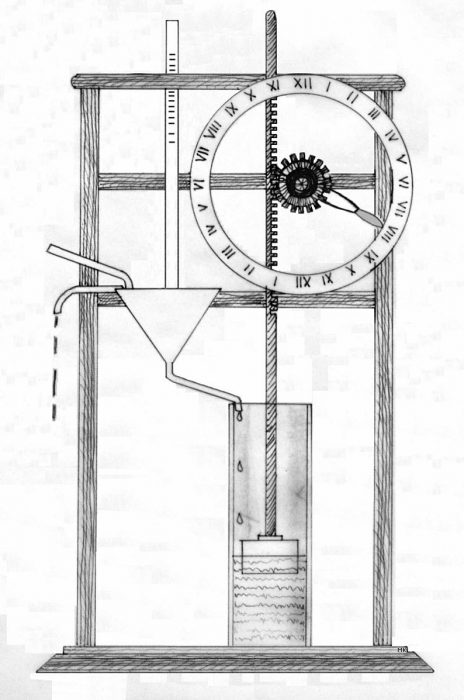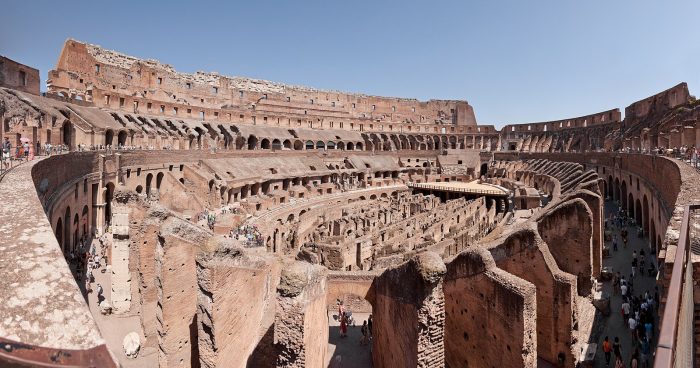Ancient World (about 3000BC-476AD)
1
Catherine Witte; Ashley Crunk; bayleeg; Madison Rohm; and DrewReynolds
Introduction
Pre-history may be more accurately contextualized as the era of human existence preceding cooperation. Small groups wandered, struggling to maintain resources and cohesiveness. For thousands of years, humans were content to pursue a nomadic existence.
Eventually, there was a shift towards a sedentary society as humans began to seek areas that could sustain their survival for extended amounts of time. This trend paralleled the rising utilization of agriculture. Suddenly, groups that couldn’t exceed a handful of families before began incorporating each other and creating larger societies. Thus begins our modern conception of history; ancient sedentary civilizations reliant on agriculture and the innovations that resulted.
The Ancient unit chronicles the increasing prominence of human scientific development, documenting how the foundations of modern society and our conception of civilization itself were solidified into human consciousness. The creation of the written word, the construction of monumental centers of human enterprise, the discovery of buoyancy, and the invention of alarm clocks each add to the tapestry of human achievement that tints our view of the world today. By the end of this chapter, you should be given an insight into how scientific development and technology contributed to the ancient society.
URUK: Rise of a civilization
Uruk was the first major civilization, definitively ending pre-history in 3500 BCE. Located in ancient Mesopotamia, the city was the center of urbanization and trade. Uruk’s walls were built by King Gilgamesh himself, covering over two miles. The progressions of Uruk allowed it to evolve from “agricultural villages to an urban center with a stratified society, a bureaucracy, and a strong military” (Georgievska, 2017). The city was home to a number of technological innovations, including the first measurement system and the first tax system, both conceived by King Sargon of Akkad and integral to the establishment of Uruk as a center of trade in the ancient world. One of the more notable advancements to come from this ancient civilization included the first written language, known as Cuneiform.
Cuneiform, meaning “wedge-shaped,” describes the nature of the characters cut into clay tablets. Originally, the technology communicated simple ideas and numerical values with pictures. As the use of cuneiform spread, however, it grew in complexity. A phonetic script developed and syllabic symbols replaced the more rudimentary forms of cuneiform, and eventually, the writing form began to resemble an alphabet after which our own modern form was modeled. This set the tone for scientific expansion, as theories and discoveries could be recorded and further analyzed. The scientific discoveries made in the ancient period seem insignificant, their magnitude was revealed by their impact on society and the future of technology.
Cuneiform: writing and its impacts
While written language originated in the ancient city of Uruk, it’s potential and use is best exemplified by the great Persian Empire, a civilization that endured from 550 BC – 1925 AD. Cyrus the Great, founder and ruler of the first Persian Empire, used cuneiform and The Chapar Khaneh, a precursor to the postal system, to disseminate messages across his empire and to protect the religion and culture of the lands he conquered. The most notable example of Persian cuneiform and of Cyrus the Great’s famous religious tolerance is

preserved in the Cyrus Cylinder. Whether the document was intended as proclamation or propaganda is debated among scholars, but many experts, including the United Nations, consider the document to be the first example of a human rights charter. Modern-day Iranian politicians and ancient Jewish historians alike praise Cyrus and his efforts to guarantee freedom for all, an impossible feat without technology like Cuneiform (Ebadi, 2003; 2 Chronicles 36:23, ESV). Given the broad expanse of The Persian Empire, written messages required effort and infrastructure to disseminate. In his history of the Greco-Persian Wars, Herodotus describes a precursor to the modern post office known as the Chapar Khaneh. Created by Cyrus the Great and later improved by Darius I, this system involved a number of outposts along the Royal Road and was designed to provide couriers with supplies and fresh horses. The Chapar Khaneh, not unlike the Pony Express in 19th century America, allowed for rapid message dissemination across the Persian Empire.
Ziggurats: An offering to the creators
Urbanization was not possible without the consolidation of leadership and the creation of key technologies like Cuneiform. Another vital component of the creation of cities and civilizations is the pyramid. Ancient Mesopotamian pyramids, known as ziggurats, were built in the center of early cities or often, cities were built around them. This tendency to build around a key component of society is known as the central place theory, a concept that repeats itself throughout ancient civilization and into modernity.

Building ziggurats was not an easy task. Mud bricks formed enormous step-temples, terraces with increasingly small levels. The size of these temples is due to another ancient technology, the ramp. Ramps allowed builders, mostly lower-class citizens, to drag bricks to the top of the structure (Mark, 2018). Duties didn’t end with the construction process. Ziggurats like Eridu, located on the southern end of the Euphrates river, existed only as a dwelling place for the gods. Countless citizens devoted their lives to the maintenance of temples like these and, in the case of Eridu, to the service of Enki, the god of water and life, for whom the ziggurat was built. Religious temples and sacred earthly houses for the gods, ziggurat construction and maintenance demanded ample resources, people, and time. As a result, these temples influenced society and technology in major ways. Through societal innovation, people were enabled to practice their religion and contribute to society in meaningful ways.
Archimedes: Innovation in the bathtub
As society began to grow around edifices like the ancient ziggurats, language, math, and philosophy grew too. Archimedes, known as “the most famous mathematician and inventor in ancient Greece,” spent most of his career in Syracuse, the principal city-state in Sicily (Toomer, 2019). Archimedes remains very well-known because of the magnitude of his work in science and technology today.

Archimedes’ most noteworthy discovery was the displacement theory. Archimedes was tasked with determining whether the new crown made for King Hieron was in fact “pure gold as the goldsmith has claimed” (Russo, F et al., 2009). The displacement theory was discovered by Archimedes in the bathtub. He noticed that the more he sunk into the water, the more water was displaced, concluding that the amount of displaced water was an exact measure of his volume. Upon this revelation, he inadvertently coined the term “Eureka,” or “I have found it,” which he cried out while running down the street naked. He applied the concept to his issue at hand: the King’s crown (Toomer, 2019). Since gold is much heavier than other common metals, more water would be displaced by a mixed metal crown than by a lump of pure gold of equal weight. If the crown was, in fact, made of pure gold, the water displacement of the crown would equal that of a lump of gold of equal weight.
Archimedes’ discovery regarding water displacement led to advancements in society that changed the way people lived. Initially used to discredit the goldsmith that made King Hieron’s crown, the theory also led to Archimedes’ explanations of the principles of buoyancy and Archimedes’ Principle (Toomer, 2019). These concepts were further developed by scientists for years and used to create technologies like the watermill.
Plato’s Clock: An alarming discovery
Water was central to technological innovation in ancient times. The first alarm clock, created by Plato and later reconstructed by Greek engineer Ctesibius, involved the use of

water. Plato’s first model of the alarm clock was a key technological innovation with regards to time management, opening doors for future inventions and advancements.
In Plato’s design, a tube with thin openings was filled with water. When the water rose quickly through the tube, time could be tracked. According to history, Plato adapted his design to manage time because of a student who overslept regularly. Adding a siphon and a second vessel, Plato created a clock that made a loud whistling sound, effectively waking up the student in time for class.
Plato’s invention of the water alarm clock, c. 428- c. 424 BCE., set the precedent for the advancement of time constructs and time management. This early model of an alarm clock inspired Ctesibus to create a new system for the alarm clock, the Clepsydra. This modification was one of the many small adjustments that would eventually lead to the alarm clocks we have today.
Ancient Greek inventions, such as Plato’s first model of the alarm clock, ultimately influenced change and growth throughout the world. Tracking time daily in the modern era is a very simple task thanks to the continuous innovations and improvements to the alarm clock.
Gladiator arenas: An Urban centerpiece
As the Ancient period progressed, technology grew in complexity, but some concepts remained the same. The allure of the Roman gladiatorial games gathered the masses, similar to the Mesopotamian ziggurats and the football games of modernity. These events were one of the main forms of entertainment in the Roman Empire, and thus gained vast amounts of attention from the people of that time. The Roman gladiatorial games gradually changed as the Roman Empire itself progressed. The most famous of the arenas built was the Colosseum, which is located in the center of Rome, as seen in Image 1. Popular Colosseum events included staging past victories in battles, filling the basin of the Colosseum with water with aqueducts to allow for the reenactment of naval battles, and most famously, exotic animal hunts (Simkin, 2020; Rosentraub, 2010). As the gladiatorial events continued to grow larger in variety and complexity, it became important to consider the general location of them as well as how the spectators would spend their time while attending.

Arenas were built at the centers of large cities to accommodate the large crowds attracted to the games. Alternatively, many cities were built around arenas (Simkin, 2020), aiding in the process of urbanization. Image 2 illustrates how the cities were built around the arenas. Like the ziggurat temples to ancient gods in Mesopotamia, the Roman arenas followed the central place theory. The gladiatorial games transformed trade in the Roman Empire. One new form of trade that resulted was the trade of the gladiators themselves from one arena to another to allow for a greater variety of battles (Dhwty, 2018). Another trade that developed included exotic animals, including tigers, bears, elephants, rhinoceros, ostriches, and more used in the hunting games. The farther animals were traded, the more exotic they became to the inhabitants of that city, the greater the crowd to see them became (Simkin, 2020). Finally, new markets emerged including “periodic markets,” or markets that would come and go with specific events, and the macellum, a large indoor market that stayed open daily (Walker, 2004).
Conclusion
During the Ancient World, the following can easily be seen: When people come together, cities are formed. Where cities are formed, trade occurs. Where trade occurs, society flourishes. Within a span of only a few thousand years, humanity transformed from nomadic, scattered tribes to monolithic, enduring empires. The compounding returns on knowledge resulting from consistent inquiry allowed for increasing amounts of power to be dispensed. Technology allowed for the reallocation of labor, enabling inventors like Archimedes and Plato to exert their effort solely on their studies. In addition, the centralization of governing prompted by urbanization allowed for vast increases in cultural-boosting technologies such as the writing system, the gladiatorial arena, and religious monuments. In sum, urbanization was a vital development of the Ancient time that fostered an environment in which thinkers revolutionized their societies and effected changes upon the course of history.
Chapter Questions
- True or False: The Indian Caste System was a social hierarchy that dictated occupation and was developed by observing the Persian Empire’s treatment of conquered territories.
- Multiple Choice: Identify the civilization to first implement a cuneiform:
a. Babylon
b. Persia
c. Uruk
d. Rome - Multiple Choice: What is the name of the first civilization?
a. Syracuse
b. Akkad
c. Uruk
d. Sargon - True or False: The term “Eureka” was first used by King Hieron in 212 BC.
- Short Answer: What about the location of the gladiatorial arenas helped facilitate the ability to trade?
- Short Answer: How was the alarm clock adapted since its initial invention during the Ancient Era?
References
Dhwty. (2018, May 25). The Gladiators of Rome: Blood Sport in the Ancient Empire. https://www.ancient-origins.net/history/gladiators-rome-blood-sport-ancient-empire-002574
Georgievska, M. (2017, July 5). Uruk: The first major city in the world, built by King Gilgamesh. The Vintage News. https://www.thevintagenews.com/2017/07/05/uruk-the-first-major-city-in-the-world-built-by-king-gilgamesh/
Mark, J. J. (2018, March 23). Religion in the Ancient World . Ancient History Encyclopedia . Retrieved from https://www.ancient.eu/religion/
Rosentraub, M. S. (2010). Major League Winners: Using Sports and Cultural Centers as Tools for Economic Development . CRC Press. [ebook – PDF].
Russo, F., Rossi, C., & Ceccarelli, M (2009). Devices for distance and time measurement at the time of roman empire. In International Symposium on History of Machines and Mechanisms (pp. 101-114). Springer, Dordrecht.
Russo, N. (2016, April 21). A 2,000-Year History of Alarm Clocks. Atlas Obscura. Retrieved from https://www.atlasobscura.com/articles/a-2000year-history-of-alarm-clocks
Simkin, J. (2020, January). The Roman Games. Spartacus Educational. Retrieved from https://spartacus-educational.com/ROMgames.htm
Toomer, G. J. (2019, November 12). Archimedes. Encyclopedia Britannica. Retrieved from https://www.britannica.com/biography/Archimedes
Walker, S. (2004). The Macella of Rome. The School of Historical Studies Postgraduate Forum e-Journal, 3, 1-6.
https://www.societies.ncl.ac.uk/pgfnewcastle/files/2015/05/Walker-The-Macella-of-Rome.pdf
Images
“কানাডার অন্টারিও ওটাওয়াতে একটি টোট্যাম” by Andrevruas is licensed under CC BY-NC-SA 4.0
“Cyrus Cylinder – British Museum” by Joyofmuseums is licensed under CC BY-NC-SA 4.0
“Ancient ziggurat at Ali Air Base Iraq” by en:User:Hardnfast is licensed under CC BY 3.0
“experiment showing Archimedes’ principle” by MikeRun is licensed under CC BY-SA 4.0
“Diagram of a fancy clepsydra” by John Farey, Jr. is in the Public Domain
“Internal view of the Colosseum” is in the Public Domain, CC0
